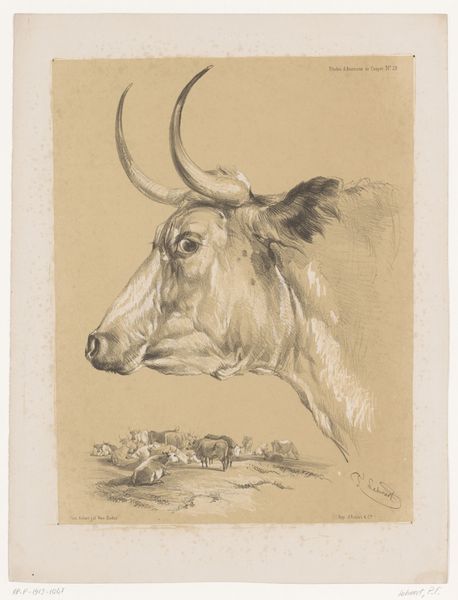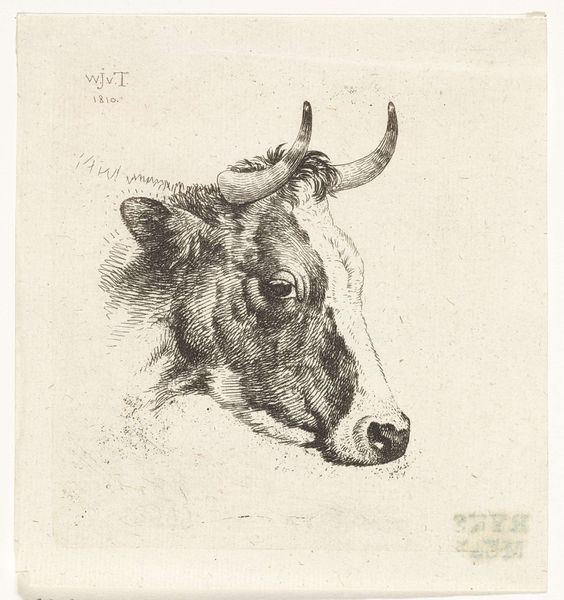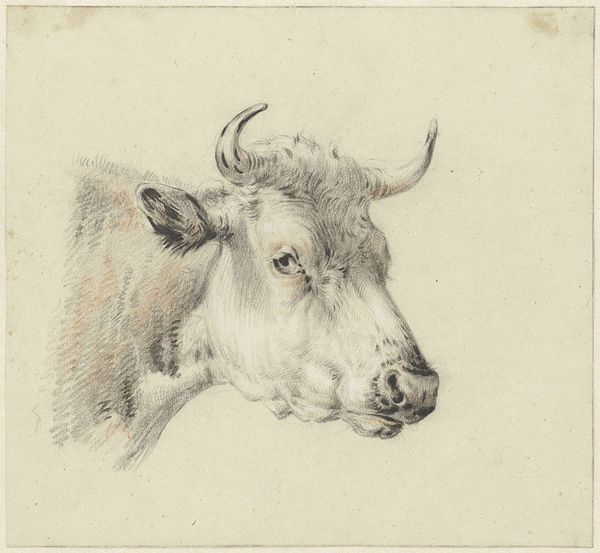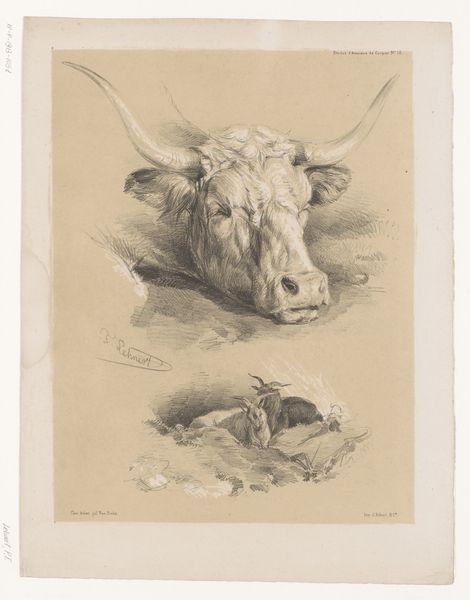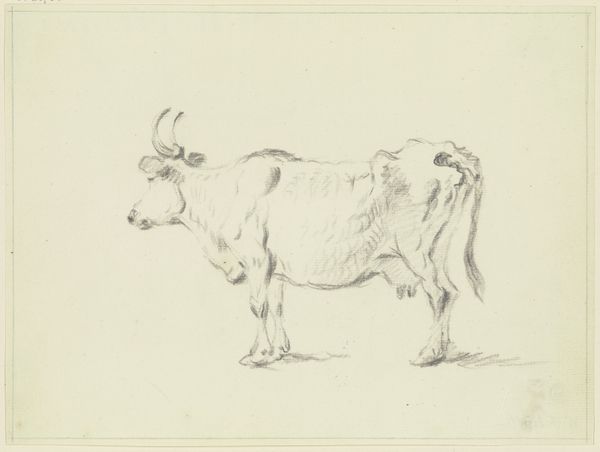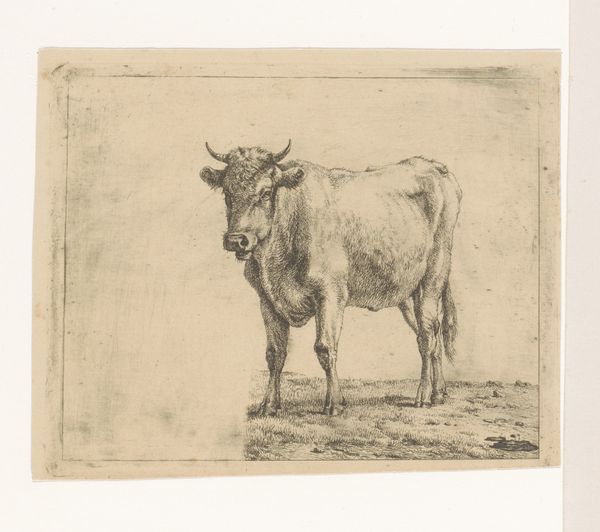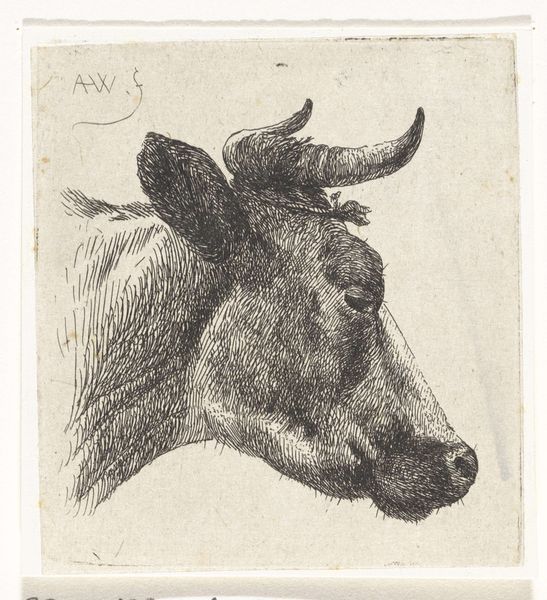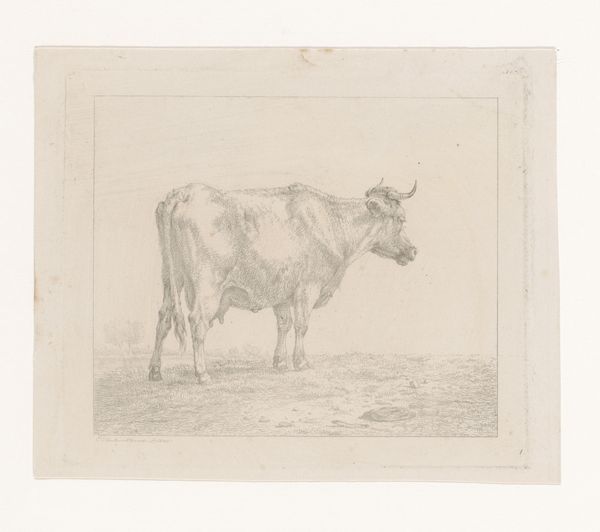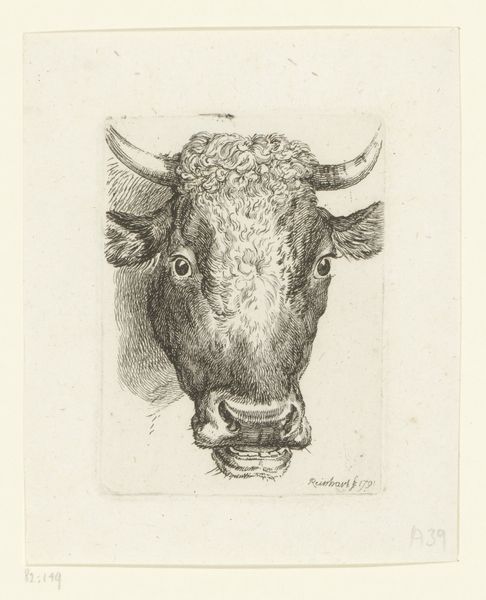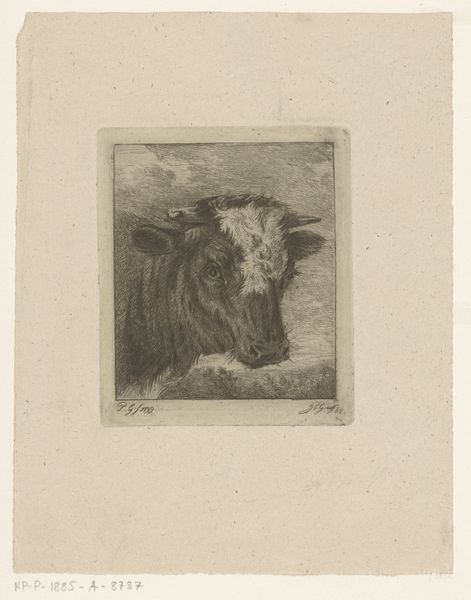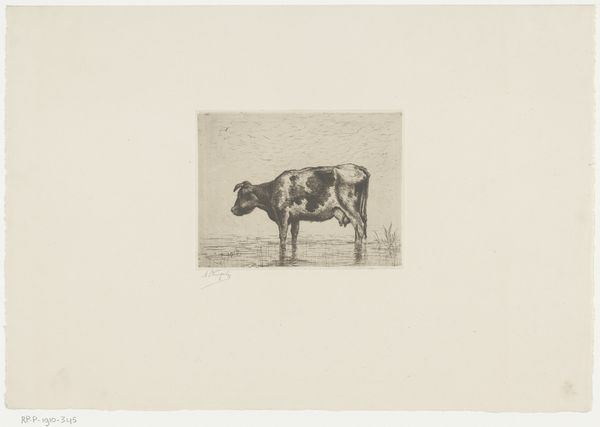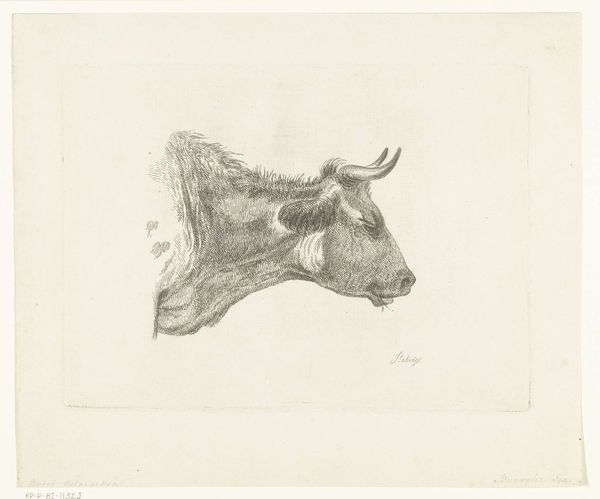
drawing, pencil
#
portrait
#
drawing
#
etching
#
pencil drawing
#
pencil
#
botanical drawing
#
pencil work
#
realism
Dimensions: height 160 mm, width 132 mm
Copyright: Rijks Museum: Open Domain
Editor: Here we have "Ossenkop," a pencil drawing by Wouter Johannes van Troostwijk, created sometime between 1792 and 1810. It's a simple portrait of an ox's head. It strikes me as incredibly direct; what is your take on it? Curator: This work really exemplifies a shift in artistic interest during that period. Moving away from solely depicting nobility or grand historical events, artists started focusing on the everyday. Van Troostwijk's choice to depict an ox, a working animal, reflects a broader cultural engagement with agrarian life and the burgeoning scientific interest in the natural world. Editor: That's interesting. So, you are saying it represents more than just an animal portrait. How did the public view this type of art? Curator: Precisely. These types of studies allowed the rising middle class to engage with art that reflected their values and experiences. The detailed rendering also hints at the growing importance of realism and observation, influencing the development of art criticism and the demand for art that mirrored life authentically. The institutional role is that we find more works focused on common life subjects during that era and less of portraits for kings. Editor: So, an increased appreciation for accurate representations of the everyday… Was this accessible at the time? Curator: Exactly! This accessibility democratized art viewership. Also, drawing like this provided foundational skills to architecture and other disciplines that boomed during the same period, so society became favorable towards such works. Editor: I never considered the democratizing influence of realism. Thank you. Curator: A pleasure. Recognizing art's relationship with broader social and political trends makes art viewing all the more rewarding, right?
Comments
No comments
Be the first to comment and join the conversation on the ultimate creative platform.
